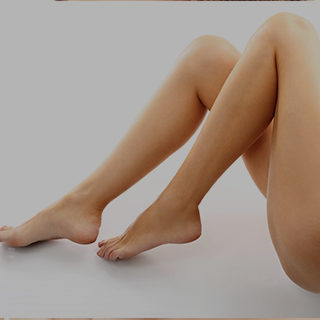The Lowdown on All Things Veins

Varicose veins are a common affliction that affect 20 million women and 11 million men in the U.S., according to the American Heart Association. Around 2 million of those varicose vein sufferers will develop symptoms to accompany their bulging veins, including pain, swelling, and venous ulceration. Despite their prevalence, many adults are unaware why these veins develop and how they can be treated to eliminate both the unsightly veins and their symptoms.
Why Varicose Veins Occur
Varicose veins are usually caused by an underlying condition known as chronic venous insufficiency or CVI. This condition occurs when small valves inside the vessels become damaged over time. Because the valves help keep blood flowing back to the heart, when they stop working, blood pools inside the veins resulting in swelling of the vessel and varicosity.
Risk Factors for Varicose Veins
Varicose veins can happen to anyone, particularly after the age of 40. However, there are certain factors that make you more prone to this condition:
- Genetics – nearly 50 percent of varicose vein sufferers have a family history of the condition
- Gender – varicose veins occur in around 55 percent of women, but just 45 percent of men
- Age – around half of the population over the age of 50 has varicose veins
- Weight Gain – women who are overweight have a 50 percent increased risk of varicose veins
Other risk factors for varicose veins include smoking, a sedentary lifestyle and jobs that require long periods of sitting and standing. Some of these risk factors can be controlled, while others are not. If you have risk factors you are unable to change, such as gender or heredity, additional steps to prevent varicose veins may go far in keeping the condition at bay or minimizing the appearance and symptoms of varicose veins that do develop.
Varicose Vein Prevention
While you cannot prevent varicose veins completely, there are steps you can take to lower your risk:
- Exercise regularly and maintain a healthy weight
- Avoid long periods of sitting or standing
- Kick the smoking habit
- Elevate your legs for a period of time every day
- Consider compression therapy if you are at high risk for varicose veins
Varicose Vein Treatment
If you do develop those bulging, twisting vines on your lower legs, there are minimally-invasive treatments available today that can get rid of varicose veins for good. Cutting-edge treatments using lasers and radiofrequency energy offer an effective method of eradicating veins without disrupting your daily life. In fact, some patients are able to return to regular activities as soon as their vein treatment is completed.
Varicose veins may be a common problem, but you don’t have to suffer with this condition forever. At Advanced Varicose Vein Treatments of Manhattan, we offer a variety of vein treatments that allow us to tailor your procedure to your specific needs. Contact us today to learn more at 212-204-6501.

